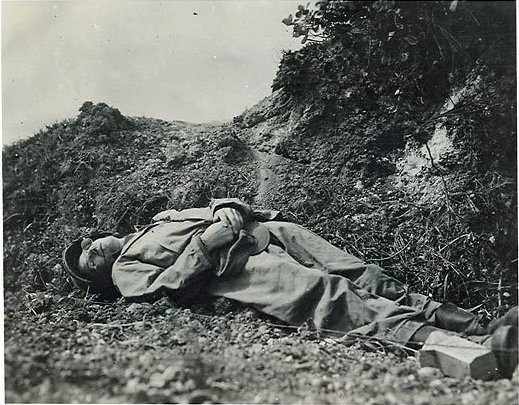I read almost all his paper published columns, the books published after-war are better, since they’re not censored. I just found how he died. Great reading for all interested in what the G.I. lived through…
Following the entry of the U.S. into World War II, Pyle became a war correspondent, applying his intimate style to the war. Instead of the movements of armies or the activities of generals, Pyle generally wrote from the perspective of the common soldier, an approach that won him not only further popularity but also the Pulitzer Prize in 1944. His wartime writings are preserved in three books: Brave Men, Here is Your War, and Ernie Pyle in England.
In 1944, he wrote a column urging that soldiers in combat get “fight pay” just as airmen were paid “flight pay”. Congress passed a law giving soldiers 50 percent extra pay for combat service. The legislation was called “the Ernie Pyle bill.”
He reported from the United States, Europe, Africa, and the Pacific. On April 18, 1945 Pyle died on Ie Shima, an island off Okinawa Honto, as the result of machine gun fire from an enemy machine gun nest. He had set out in a jeep with Lieutenant Colonel Joseph B. Coolidge, commanding officer of the 305th, as well as three other men. The road, which paralleled the beach two or three hundred yards inland, had been cleared of mines, and hundreds of vehicles had driven over it. As the vehicle reached a road junction, a machine gun position firing from a coral ridge about a third of a mile away opened up. The men stopped their vehicle and dived into the ditch. Pyle and Coolidge raised their heads to look around for the others, and when they spotted them, Pyle smiled and asked Coolidge “Are you all right?” Those were his last words. The machine gunner opened up again, and Pyle was struck in the left temple. The colonel called for a medic, but there were none present; regardless, Pyle had been killed instantly. He was buried with his helmet on, and laid to rest in a long row of graves among other soldiers, an infantry private on one side, an engineer on the other. At the 10 minute service, the Navy, Marine Corps, and Army were represented. He was later reburied at the Army cemetery on Okinawa, then moved to the National Memorial Cemetery of the Pacific located in Honolulu. When Okinawa was returned to the Japanese the Ernie Pyle Memorial was one of three American memorials they allowed to remain in place.

